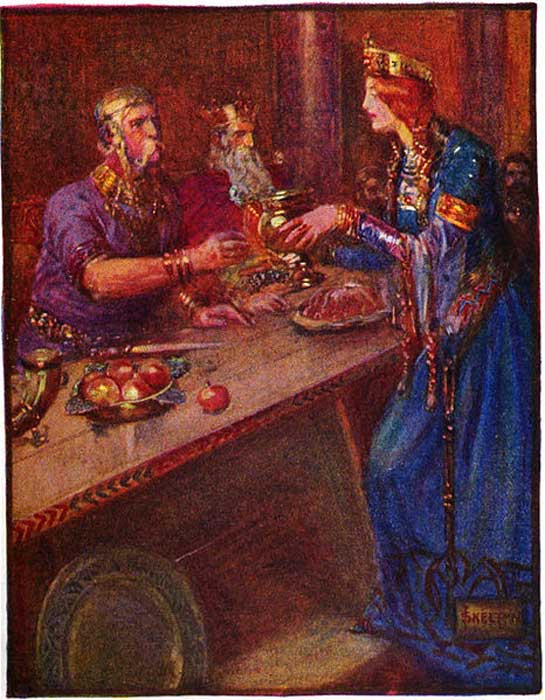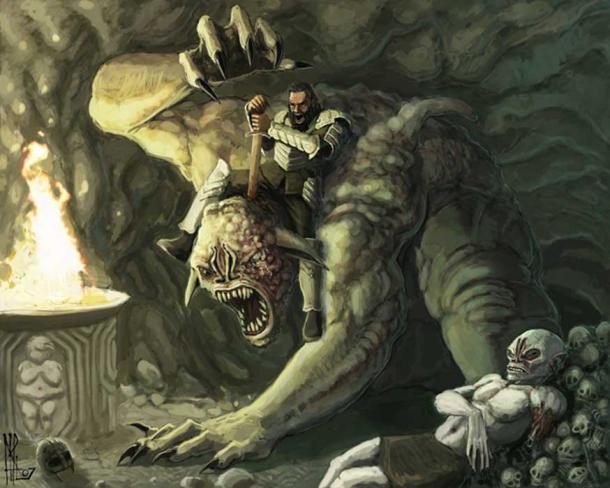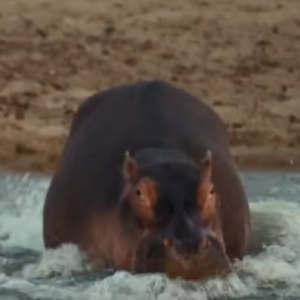Beowulf is possibly the most famous example of Anglo-Saxon literature. The heroic epic was created between the 8th-11th century and is set in Scandinavia. In the tale, Beowulf helps the king of the Danes, Hroðgar, by defeating a monstrous being called Grendel. Until Beowulf showed up, Grendel had been wreaking havoc on the mead hall and the rest of the kingdom. Just a piece of fiction? Maybe not. The 6th century dining hall at the center of this epic has been found in Denmark.
Beowulf, The Legend
In the Beowulf story, Hroðgar had a ‘great and splendid hall’ created to share the gifts of God. The legend says craftsmen came from distant lands to build the hall and their skilled hands completed the construction quickly. This hall was called Heorot and it was the site of grand feasts, the gifting of gold rings, and the sounds of songs and poetry around a harp. But all the merrymaking annoyed Grendel, who snuck into the hall while Hroðgar and his warriors were resting…he devoured many of them.

Hroðgar receives wine from the Queen. ( Public Domain )
Veronica Parkes describes how the rest of the Beowulf story involving Grendel goes:
“As a result, Heorot is abandoned by those who are left and a call is made for aid. Beowulf answers this call and faces Grendel one on one, without any weapon. Beowulf’s men come to his aid in the heat of battle, but their swords cannot pierce the monster’s skin. Finally, Beowulf tears Grendel’s arm from his body and the monster retreats to the marshes and it dies.”
That’s not even the end of it. Grendel had a mother and she sought revenge for her son’s death. Beowulf tracked her down, found she took Grendel’s body with her, and that her skin was also immune to his weapons. But he was able to defeat her with a sword found in her lair. The warrior decapitated Grendel’s mother and Grendel, then brought the heads to Hrothgar and was presented with many gifts at Heorot.
The Real Setting of Heorot
Heorot has now been named a real location. It was discovered in the old royal capital of Denmark, Lejre, 23 miles (37 km) west of modern Copenhagen by Tom Christensen and his team. The archaeologists found, excavated, and dated the building to the late 5th or early 6th century. They also managed to name the foods that were probably consumed at the grand feasts held in Lejre’s first royal hall.

A representation of Heorot. ( An Historian Goes to the Movies )
By analyzing the bones of hundreds of animals discovered at the site, the researchers showed that suckling pig, beef, mutton, goat meat, venison, goose, duck, chicken, and fish were all feasted on. They also found fragments of glass drinking vessels, pottery from England and Rhineland, and 40 pieces of bronze, gold, and silver jewelry.
Reflecting on the discovery , project director Dr. Christensen, curator of Denmark’s Roskilde Museum, said, “For the first time, archaeology has given us a glimpse of life in the key royal Danish site associated with the Beowulf legend.”

Beowulf fighting Grendel’s mother beside Grendel’s body. (ndhill/ Deviant Art )
Is There More Truth to the Beowulf Story?
The find raises the question as to how much of the Beowulf story is legend and what may be truth. Historical records also state that the grand hall was abandoned due to Grendel’s attacks. If Grendel (literarily ‘the destroyer’) existed as a malevolent spirit causing disease and death, or was a fierce human enemy, is still unknown.

Another depiction of what Grendel may have looked like. ( Public Domain )
Riley Winters has explored this topic in a previous Ancient Origins article . She came to the conclusion that:
“Grendel is likely a version of a Scandinavian giant . While the Anglo-Saxon author—whoever he was—might have created his own version of a “monster” while placing the tale of Beowulf in Scandinavia, the numerous interactions with Viking forces in modern day England, Ireland, and Denmark make it possible that the author attempted to incorporate Scandinavian mythology in the text as well. Further, there is quite a bit of overlap between pre-Christian Anglo-Saxon gods and Norse ones.”
Either way, it is exciting to think that at least some of the Beowulf story is based on real life – as shown by the identification of the story’s legendary hall.



